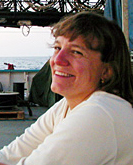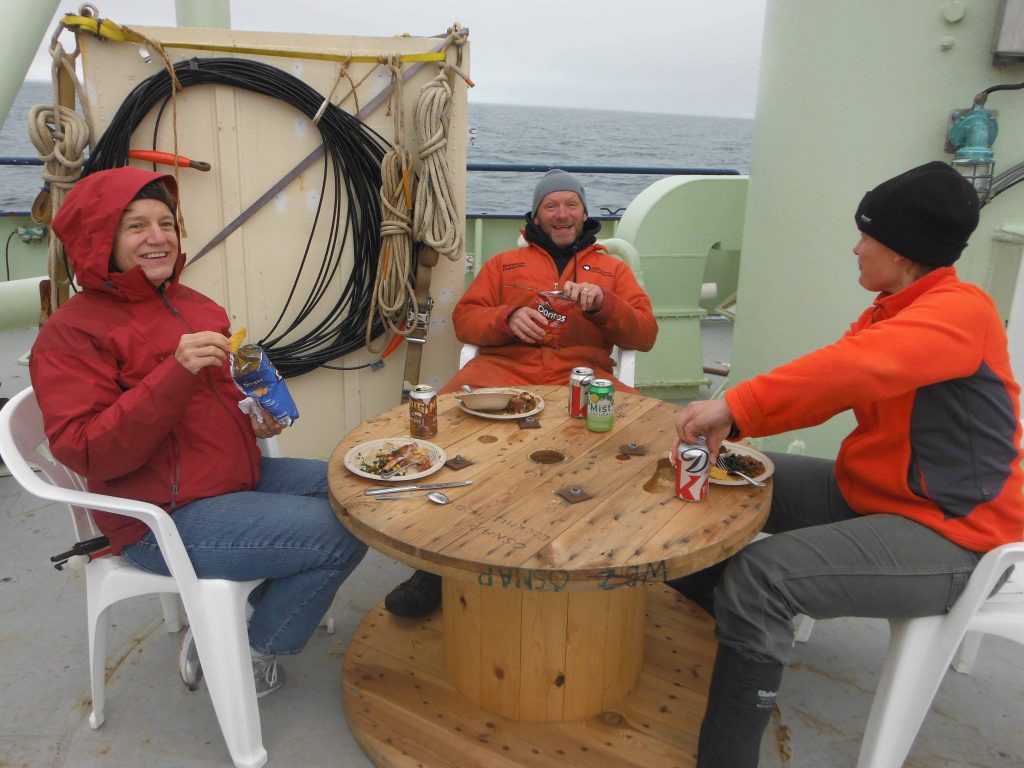Untangling Spaghetti: Tracking Deep Currents in the Gulf of Mexico
The ever-growing demand for oil and gas to fuel our cars, heat and air-condition our homes, transport ourselves overseas and power our iPhones has motivated oil companies to search for these fossil fuels almost everywhere on Earth, even under the ocean floor. This includes the Gulf of Mexico, where rich reserves have been pumped from…
Another Step Forward for Accessible Science
A couple of weeks ago, I was invited on an “ADA (Americans with Disabilities Act) tour” of a brand new oceanographic research vessel, the R/V Sikuliaq. Commissioned by the U.S. National Science Foundation (NSF), the Sikuliaq will be operated by the University of Alaska. It’s ice-strengthened hull will allow it to work in the Arctic…
Grand Finale!
Sorry for the delay in blog posts. Ever since we started heading for the Bight Fracture Zone, I’ve been busy with the onboard work, and it’s been quasi rough. That is all behind us now, as we are safely tied up to the dock in Reykjavik, Iceland. Cruise kn221-02 is officially over, and my colleagues…
My Shampoo Bottle Finally Fell Over!
Well, it finally happened. The unusually fine weather we had for nearly three weeks came to an end last night as a moderately strong low pressure system swept by us. The winds picked up, as did the seas, and the shampoo bottle — my highly sophisticated barometer -tumbled over as the Knorr pitched and rolled…
Disappointment
Not the greatest day today. I had been hoping to deploy another of my sound source moorings, but at the last minute it didn’t work out. Since we added this side trip toward Greenland, I had an opportunity to re-position a sound source mooring that was actually scheduled to be set during the next OSNAP…
Scientists Helping Each Other
Late last night, we finished our second transect along our part of the OSNAP line. At the cruise outset, we transited from west to east (from off the coast of Greenland to Scotland) laying down about 20 deep-sea moorings. Then we turned right around and re-traced our steps, this time using the CTD package to…
Death by Needle Gun
I finally climbed into my bunk this morning at 5 AM, after 20 hours without sleep. There was a break in the RAFOS float deployments—a chance to get a little rest. I dozed off right away, inspite of being rather jazzed up by all the stress of choosing the right float release positions. But just…
It All Comes Down to This
We’ve just started the busiest portion of this cruise for the RAFOS float program. Today we have released the first 2 of the 10 deep floats that will sink to near the sea floor and drift with the currents there for the next two years. It is very tricky to find the best positions for…
Investing for the Long Term
On Saturday, we reached the eastern-most point of this expedition, just a few 10s of miles off the western coast of Scotland. We could almost hear the bagpipes ! Our Scottish colleagues, led by OSNAP principal investigator Stuart Cunningham, deployed the last of the moorings–a trawl-resistant frame with an acoustic Doppler current profiler, or ADCP, inside….
Jaws Goes to Sea
One Ocean Insight blog reader remarked recently that he found it so funny that there was an oceanographer that used Jaws! I had never made that connection myself, perhaps because what I study is not what most people think of as oceanography. What do you think of when someone says “oceanography”? According to my unscientific…
About Amy Bower
 Amy Bower is a physical oceanographer at the Woods Hole Oceanographic Institution. She has been chasing ocean currents in the Atlantic and Indian Oceans for over 25 years, primarily by releasing acoustically tracked floats far below the sea surface. Legally blind since her mid-20s, Amy uses adaptive technology to continue her research.
Amy Bower is a physical oceanographer at the Woods Hole Oceanographic Institution. She has been chasing ocean currents in the Atlantic and Indian Oceans for over 25 years, primarily by releasing acoustically tracked floats far below the sea surface. Legally blind since her mid-20s, Amy uses adaptive technology to continue her research.
Related Links
Subscribe by Email
Completely spam free, opt out any time.
